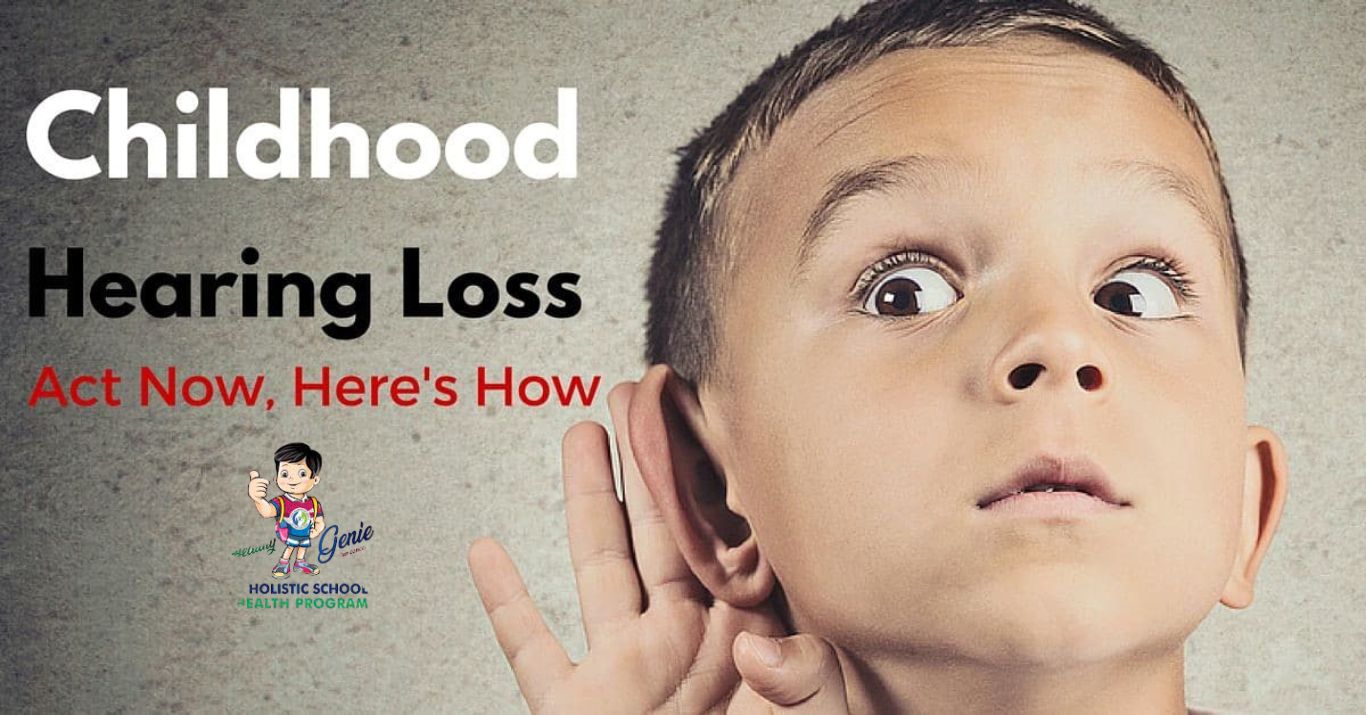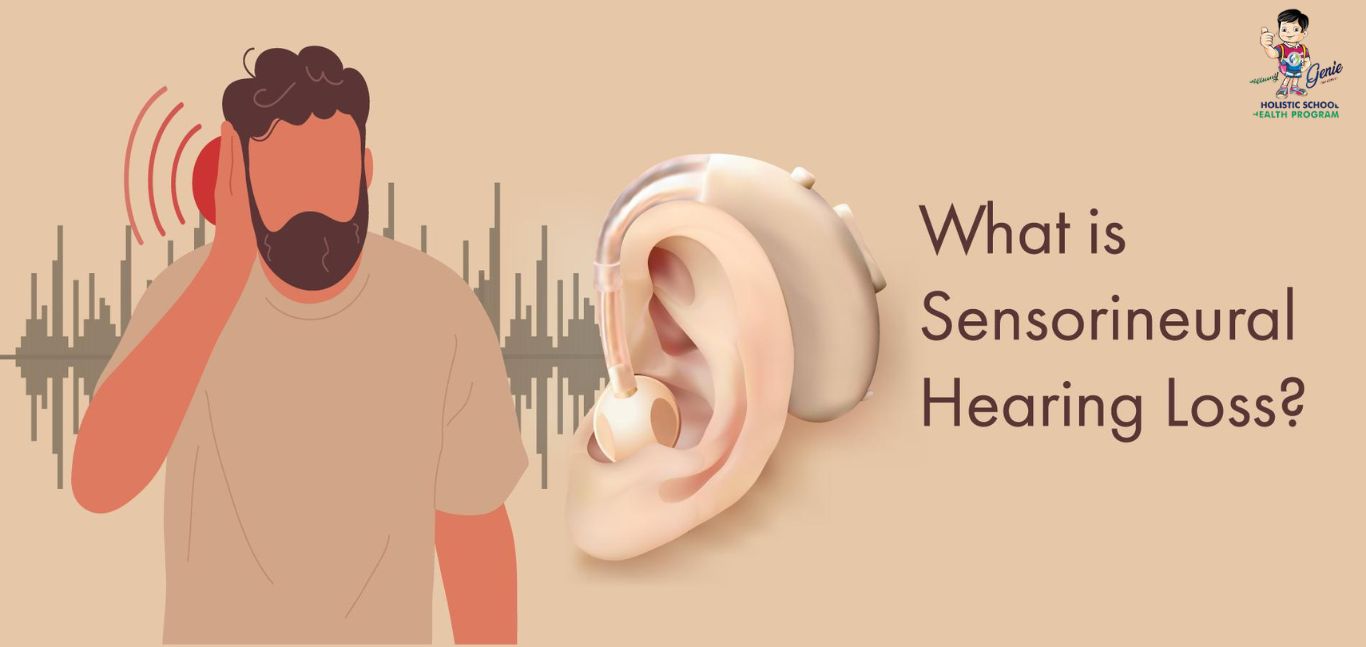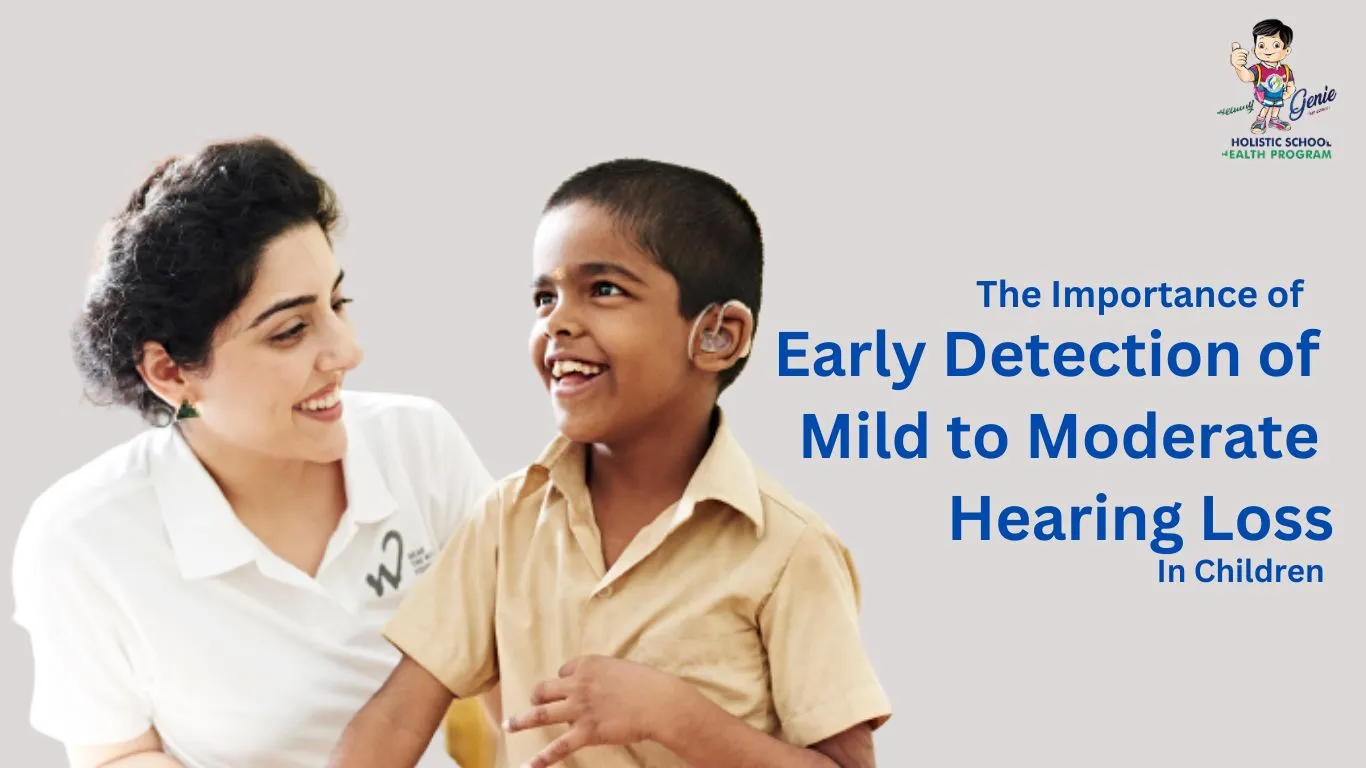INTRODUCTION of Audiometry
Myhealthygenie One way to test for hearing loss is through the use of audiometry. Hearing plays a crucial role in making a child successful academically and developing holistically. School-going children are frequently unaware that they have hearing problems, which can negatively impact their ability to learn and interact with others. It is far more than just the ability to hear that gives us the ability to perceive sound; our ability to hear affects several aspects of our daily lives. A child, if not informed correctly about the topic, might lead them towards a feeling of discomfort. As we explore the notable advantages of having audiometry tests performed in schools to ensure early detection of hearing problems and that they can be treated on time, in this blog from MyHealthyGenie, we will focus on the considerable advantages of this model.
WHY WE NEED TO DO THIS?
Detection of Hearing Loss:
The audiometry test helps to detect the presence and degree of hearing loss. Early detection allows the students and parents to start the treatment immediately and safeguard them from further damage. It develops effective speech and language. There is a link between untreated hearing loss and cognitive decline. There is potential for hearing loss to pose safety risks, especially when danger warnings, alarms, or approaching vehicles must be heard to avoid being hit by the vehicle.
Diagnosis and Differential Diagnosis:
The audiometry test helps to diagnose the type and nature of hearing loss, which is very important for the student during the Test. The diagnosis of hearing loss involves identifying and classifying the hearing impairment. It also helps differentiate between hearing loss caused by damage to the outer or middle ear and that due to inner ear or nerve-related problems.
Treatment Planning Audiometry :

Based on the results and reports of the audiometry test, the best-fit treatment and Test are recommended. Some treatments include hearing aids, cochlear implants, assistive listening devices, or medical/surgical interventions, depending on the type and severity of hearing loss. Audiologists may provide auditory training and rehabilitation programs to help individuals adapt to their hearing aids or cochlear implants, improve listening skills, and enhance speech comprehension. The professional conducts the Test using expertise, patient history, and test results to narrow down the potential causes of hearing loss and arrive at an accurate differential diagnosis.
Also Read:- Health Awareness Program
Baseline Assessment:
Besides providing a reference point for future evaluations, establishing a baseline audiogram will enable you to track the changes in your hearing due to time. The history of students with hearing loss is maintained to keep the baseline assessment. The audiologist uses an otoscope to examine the individual’s ears to determine whether the test results will be affected by any apparent abnormalities or earwax build-up in the ear canals and eardrums. This is very important for the students at high risk or those at risk of hearing damage due to environmental or other factors.
Pediatric Hearing Evaluation:
Hearing assessment is vital for students and young teens who cannot provide reliable feedback regarding their hearing. The professional may ask the parent or caretaker to brief about the student’s behaviour, hearing abilities, commination skills, and about responsive nature.
WHAT ARE ITS BENEFITS?

Early Detection of Hearing Loss: The audiometry test helps the student identify hearing loss early, even before the child notices it. It will give you timely medical attention, preventing further deterioration and improving the situation. It will improve the student’s communication skills, majorly in understanding speech and engaging in conversations. Access to appropriate medication during the critical early years can greatly enhance a child’s language acquisition and communication skills. It may also cause a feeling of isolation or frustration.
Also See:- health awarness camp
Hearing Aid Prescription:
For students with hearing loss, an audiometry test helps determine the most suitable hearing aids and hearing devices. The degree and type of hearing are considered based on the test results, guiding the selection of appropriate hearing features and settings. (directional microphones, noise reduction, feedback cancellation, and connectivity options). The test results are important in optimizing the person’s hearing experience. The audiologist will provide counseling and education to the individual and their family on how to use and care for the hearing aids and what to expect during the adjustment period.
Verification of Hearing Aid Performance:
Audiometry tests are used to check the effectiveness of hearing aids and hearing devices (behind the ear (BTE), in-the-ear (ITE) ETC..). Probe microphone measurement is a commonly used method to verify hearing aid performance. The frequency response of the hearing aids is verified to assess how well the sound waves amplify. Moreover, feedback is taken to ensure proper working. This ensures the devices provide the desired amplification and meet the individual’s hearing requirements.
Monitoring Hearing Health:
A regular audiometry test is a proactive approach that helps healthcare experts to keep a check on the hearing ability of the student, and if any change is noticed, it can notice, and further action could be taken. Especially the person already with a hearing problem needs it more to prevent further damage. It gives personalized hearing care. Addressing hearing issues early can prevent communication difficulties, social isolation, and emotional challenges associated with hearing loss.
Improved Quality of Life:
By identifying and addressing hearing loss, audiometry tests contribute to an improved quality of life. Clear hearing enhances communication, social interactions, emotional well-being, and participation in daily activities. Helping students with hearing loss in social engagement. It can also enhance family dynamics by promoting free communication and conversation without hesitation.
We at MyHealthyGenie understand all the importance, needs, and benefits of audiometry tests and plan an audiometry test for the students so that we can detect the problem and help the students to get the required treatment and guidance. Our professional experts do it with extra care and expertise. They help them to overcome the anxiety and stress that may accomplish them hearing loss/ damage improves the quality of life, and provide you with early detection of the problem.
Read:- Health awareness programs in schools
How the Test is Performed Audiometry
Your Healthcare provider may also look at your hearing with simple assessments that can be performed within the office. A specialized tuning fork take a look at can help determine the kind of hearing loss.
The tuning fork is tapped and held within the air on every side of the pinnacle to check the capacity to listen using air conduction. It is tapped and placed towards the bone in the back of each ear (mastoid bone) to check bone conduction.
A formal listening to checking out can provide a more specific degree of listening to Several tests may be done:
Pure tone checking out (Audiometry) —
For this check, you put on earphones attached to the audiometer. Pure tones of a selected frequency and volume are introduced to one ear at a time. You are asked to signal when you hear a legitimate. The minimal extent required to pay attention to each tone is graphed. A bone oscillator is placed against the mastoid bone to check bone conduction.
Speech Audiometry —
This checks your potential to detect and repeat spoken words at different volumes heard thru a headset. Immittance audiometry — This takes a look at measures of the function of the eardrum and the waft of sound via the center ear. A probe is inserted into the ear, and the air is pumped via it to change the strain inside the ear as tones are produced. A microphone monitors how well sound is produced within the ear below exceptional pressures.
Also Read:- Health Awareness program
Tympanometry —
A measure of the vibration of the eardrum and middle ear strain.
How to Prepare for the Test
No special steps are wished.
How the Test will Feel
There isn’t any discomfort. The period varies. Preliminary screening may take about five to ten minutes. Detailed audiometry may additionally take about 1 hour.
Why the Test is Performed
This check can locate listening to loss at an early degree. It will also be used if you have been listening to issues from any cause.
Normal Results
Normal results include:
- The capacity to listen to a whisper, ordinary speech, and a ticking watch is regular.
- The capability to pay attention to a tuning fork thru the air and bone is normal.
- In designated audiometry, hearing is normal if you hear tones from 250 to eight 000 Hz at 25 dB or lower.
What Abnormal Results Mean
There are many kinds and ranges of listening to loss. In some kinds, you only lose the potential to hear high or low tones. Otherwise, you lose the handiest air or bone conduction. The incapability to pay attention to pure tones beneath 25 dB suggests some hearing loss.
The quantity and sort of hearing loss also explain the cause and chances of recuperating your hearing.
The following conditions may affect test results:
- Acoustic neuroma
- Acoustic trauma from a loud or intense blast sound
- Age-related hearing loss
- Alport syndrome
- Chronic ear infections
- Labyrinthitis
- Ménière disease
- Ongoing exposure to loud noise, such as work or music
- Abnormal bone growth in the middle ear, called otosclerosis
- Ruptured or perforated eardrum
Risks
There is no risk.
Considerations
Other exams can be used to determine how well the internal ear and brain pathways are operating. One of these is otoacoustic emission checking out (OAE), which detects sounds given off via the internal ear while responding to sound. This check is frequently executed as part of a new child screening. A head MRI may be finished to help diagnose hearing loss due to an acoustic neuroma.

